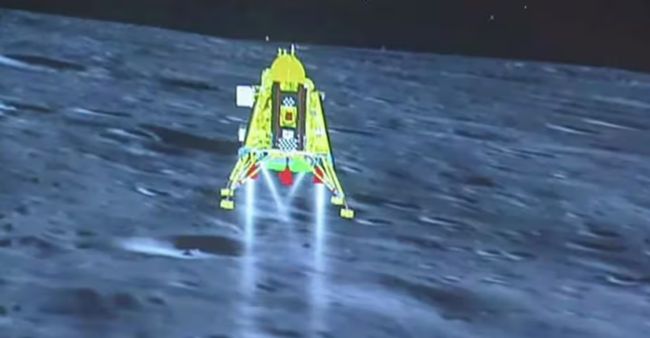When Prime Minister Narendra Modi expressed his joy and gratitude to the scientists, technicians and others responsible for the soft landing of the Vikram on the south surface of the moon, he was joined by the entire country in such an emotion. Under PM Modi, the full weight of the Indian private sector has been harnessed in the development of the space program, and multiple private entities played a role in the success of the Chandrayaan mission. For too long, the private sector was considered a much lower priority than its public counterparts, several of whom were converted into monopolies by a stroke of the pen. Not surprisingly, many did badly. It was only in the 1990s that this double standard was, if not abolished altogether, at least diluted. The consequence has been much faster economic
Chandrayaan has shown that when the Prime Minister says that India is an ideal destination for investment, no matter how advanced the product, he is being completely accurate. Across the world, while in a few countries such as China that are competing with India in attracting investment and have caused tensions in bilateral relations, in other parts of the world, the feat was welcomed, particularly in the Global South. Although China under Xi Jinping claims to be a part of the Global South, both in terms of geography as well as in terms of GDP, the country is no longer part of the group, unlike India, which has become a champion of the interests of countries hitherto ignored. The success of Chandrayaan is the success of the Global South, which is why it must have been warmly welcomed by the leaders of South Africa and Brazil at the BRICS Summit. Given that a similar mission by Moscow failed a short while ago, the President of Russia may be excused for being as unenthusiastic as his PRC counterpart at the soft landing of the India-developed space vehicle on the south side of the moon, a first in the history of space travel dating back to the 1950s.
Some years ago, when ISRO in India conducted a successful space mission, there was a disparaging cartoon on the front page of a prominent US newspaper. The cartoon showed a skinny, evidently starving, man in rags carrying a rocket under his arm and knocking at the door of a large house, inside which a few wealthy people were having a laugh at the apparition at their doorstep. The message in the cartoon was unmistakable. It was that a country with a per capita income as low as India’s ought not to try and break into the world of activities that were the prerogative of the wealthy, such as space exploration. If that cartoonist, and the editor who placed such a cartoon on the front page, are still around, they would have learnt of the success of the soft landing of the Chandrayaan mission to the moon and remembered their earlier work and its meaning. Certainly India has a per capita income that is far below what it ought to be (and will be within a decade). However, although not in per capita income but in brainpower, India is easily among the top countries in the world. Financial stringency had the benefit of making ISRO scientists work hard at rockets that were much lower in cost than those launched by other countries. India has the least cost per unit of output of any space program in the world, which is why countries across the world have started to rely on Indian launch vehicles to get the satellites made by them into orbit. Unlike other space programs that concentrate on military needs, with the civilian component piggybacking on the military, in India the nuclear and space programs have as their foundational mission civilian needs, with military applications only a by-product. At the BRICS Summit that took place in South Africa, India, Brazil and South Africa worked together to ensure that the Global South in the form of IBSA (India, Brazil, South Africa) was given its due, and would together become a symbol not of backwardness but of progress. The Chandrayaan mission is a major milestone in such a necessary road.
MDN

